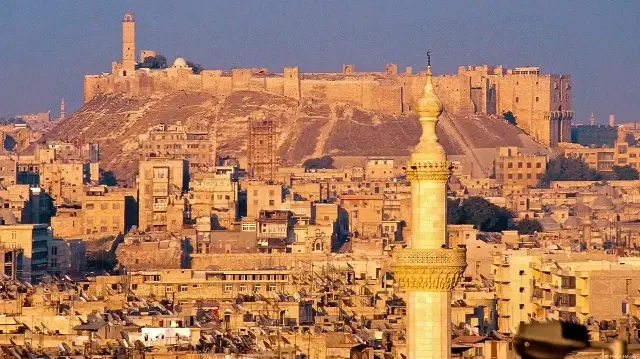Syria Today: Between Rubble and Hope

Last week’s trip was my fourth visit to Syria since the fall of the Ba’ath regime. The first one was in December 2024, in the joy and celebration of the “liberation.” Then, on January 23, 2025, I was on board the first flight operated by Turkish Airlines to Damascus after a long break. My third trip was during Ramadan for some program recordings.
On my first visit, I crossed the border at Cilvegözü Border Gate with a special permit and traveled south from Idlib. During Ramadan, I flew from Istanbul to Beirut and continued by land. On this last trip, I crossed the entire country north to south via the Öncüpınar Border Gate between Gaziantep and Kilis. Across four trips, I witnessed from different angles the early, fragile steps of a country emerging from a brutal and devastating war, struggling to stand on its own feet.
Here are some of the points that stood out to me during last week’s visit:
• At the land border, since computer and automation systems are not yet fully in place, procedures are still handled the old-fashioned way — with pen and paper. I must say the Syrian officers were extremely polite and helpful. Having known the old Ba’ath-era bureaucrat type well, the difference was both striking and encouraging.
• From Maarat al-Numan down to the outskirts of Damascus, the scars of war accompanied us at times. There are vast areas of rubble across Syria, and rebuilding them will require both time and serious capital.
• During our visit, a külliye (complex) was being built next to the tomb of Omar ibn Abd al-Aziz. The project is being undertaken by a foundation based in Ankara. We prayed for a structure that would blend harmoniously with the physical and historical character of the area. And we repeatedly expressed our hope that the modest tomb of Omar ibn Abd al-Aziz would be preserved as it is.
• On previous trips, many historical sites in Damascus and other cities were still closed to visitors. This time, I observed that people had returned to work, doors had reopened, and intellectual and cultural life was reviving. For instance, Emir Chakmak Madrasa near the Umayyad Mosque has been beautifully reopened.
• This time in Damascus, I found a much more civilian atmosphere. Routine checkpoints and security measures were still in place, but it was clear that the young “revolutionaries” in camouflage with weapons, whom I had seen on the streets during earlier visits, had now been brought under a certain order.
• Since the war destroyed energy transmission lines and infrastructure, power and water cuts continue in all Syrian cities. Even though generators or solar panels are used to meet electricity needs, the streets of Damascus remain pitch black at night. This alone illustrates the enormous burden on the country’s new administration.
• Our last stop, Aleppo, was where the challenges facing Syria were most clearly visible. In the north of Aleppo, the Ashrafiyeh and Sheikh Maqsoud neighborhoods are effectively under YPG occupation. Just before our arrival, clashes had broken out in the area, and some of the main roads connecting to the city center were closed. Key resources such as oil, power stations, and water sources are also in YPG-held areas. Electricity and water are still supplied to Aleppo only on certain days and hours of the week.
• Despite all this, I found Aleppo vibrant and full of life. The historic Aleppo Citadel — surrounded by rubble — had been reopened to visitors shortly before our visit. Climbing up the citadel after so many years was thrilling for me. From the top, we could see the full scale of the destruction. Where Khusraviye Mosque — Mimar Sinan’s first work in the Arab world — once stood, there is now a massive crater. The sight broke my heart.
• In Aleppo — a historic stop on the Silk Road — trade has been ingrained for generations, and that was reflected in the lively atmosphere of the streets. We visited the famous Cubeyli Soap Workshops behind Saffahiye Mosque. The workers told us that production had never stopped during the war. Now, they’ve even started exporting to Europe.
Syria… the jewel of Bilad al-Sham, the cradle of Islamic civilization, one of the most precious pieces of our collective memory as Muslims. May you remain proud and victorious until the end of time. And may we find you more prosperous and joyful with every visit.
Reklam yükleniyor...
Reklam yükleniyor...








Comments you share on our site are a valuable resource for other users. Please be respectful of different opinions and other users. Avoid using rude, aggressive, derogatory, or discriminatory language.